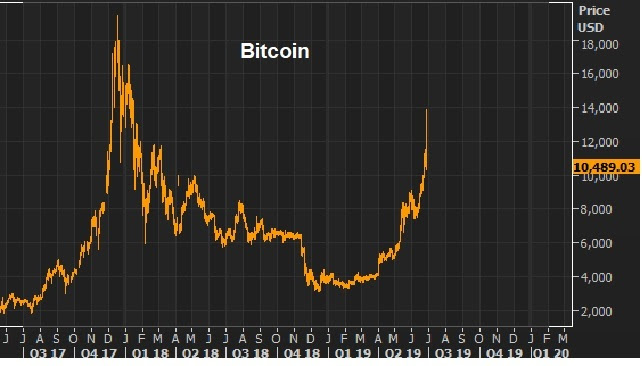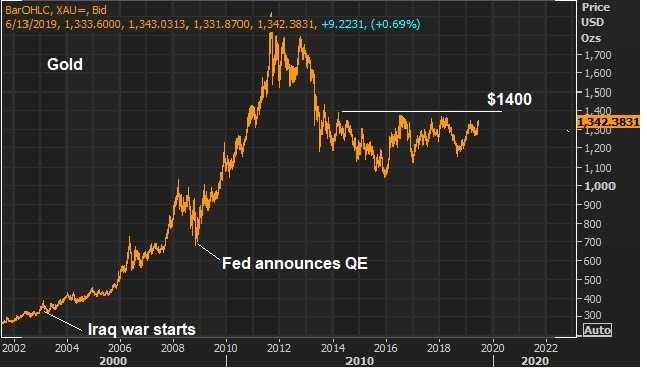Of course we’ve had big geopolitical risks along the timeline of this chart, that include an historic trade war (which continues) and potential sanctions against Saudi Arabia (late last year).
The geopolitics have consumed the markets attention. But maybe it’s all about the Fed, and their ability to interpret (or lack thereof) the impact of trade disputes and structural reform in the global economy – and position correctly.
If we look back at the timeline, the tops and bottoms in these V-shaped moves in the chart above all align perfectly with Fed speak.
Stocks topped on October 3rd and proceeded to drop 20% through the end of December. What happened on October 3rd? The Fed chair, Jay Powell, did a sit down interview with PBS, where he said, after raising rates three times for the year, that they remain far away from the ‘neutral’ rate. And he said they may go past neutral. Why? He thought tariffs and the uptick in wage growth would feed into inflation. He was wrong.
With that view of tighter and tighter monetary policy into a low inflation and recovering economy, with hurdles of trade reform in the path, the markets started signaling the contra-viewpoint: the trade war weighs on global growth, and within that context, rising U.S. rates are a killer for emerging market economies, and for the slow recovering developed markets.
Powell’s comments started the decline, which ultimately led to a big decline. Yet, the tone-deaf Fed raised rates in December, again, right into a falling stock market. Moreover, following the December Fed meeting, the Fed made it clear that they were prepared to mechanically keep raise rates — another four times in 2019.
When did it turn? It turned the day (January 4th) the Fed marched out Powell, Bernanke and Yellen, (tails between their legs) to tell the world ‘no more rate hikes/ the Fed is done.’
Stocks bottomed, on that day, and did a perfect ‘V’ back to the record highs over the following months.
When did it top again? May 1. What happened on May 1? The Fed met and Jay Powell had his post-meeting press conference. After months of running Fed officials out in the media to tell us the Fed’s got your back, Powell fumbled.
The interest rate market (10-year yields) had fallen 75 basis points from the highs of just six months prior, giving a very clear message to the Fed that, at the very least, the December hike was a policy mistake. But Powell was unwilling to show any leaning toward a rate cut. In fact, he said the risks that precipitated their “pause” on the rate path (China and European growth, Brexit risks, and trade negotiations), have been largely improving. Again, the Fed was tone-deaf and unwilling to take a defensive stance against the unknowns of geopolitical risks. Stocks go down.
A few days later, U.S./China trade talks come to a standstill. Stocks continue on for a 7% decline.
When did stocks bottom? June 3rd. What happened? A voting Fed member, Jim Bullard said that a Fed cut may be “warranted soon” to “provide some insurance” in case of a sharper slowdown. That was a primer for a June 4th speech by Jay Powell. Powell came out of the gates, in a prepared speech that morning, telling us they “will act as appropriate to sustain the expansion.” That spurred the second “V-shaped recovery” on the above chart.
The conversation at the Fed has now, finally, turned to rate cuts. And the market is now expecting a 100% chance the Fed will cut at the July 31 meeting.
Perhaps now the Fed is in the right position, trade deal or no trade deal. And that should be very good for stocks.
Remember, the last time the Fed was in this position in 1994, they cut rates and that led to a huge year for stocks — and stocks and the economy boomed through the end of the nineties.





